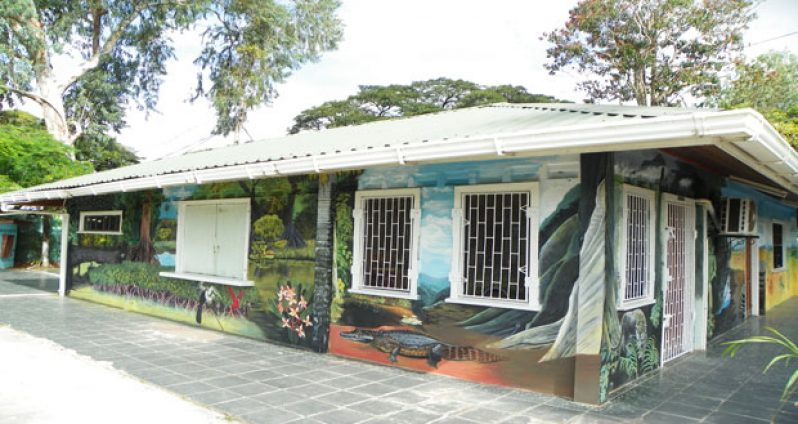The Botanical Gardens, Zoological Park and National Park are green spaces which were established in recognition of urban areas having the potential to play a meaningful role in biodiversity conservation.The Zoo which plays an important role in the conservation of animals has been described as a treasure of national and international importance.
Apart from local visitors it is the first stop for wildlife tourists.
“Foreigners and scientists who visit Guyana to see the wildlife, stop here first and then go into the fields after,” an official recently said.
Similarly, the Botanical Gardens and the National Park are the two other components of Georgetown’s network of green spaces which help urban residents stay in contact with the natural world.
Chairman of the Protected Areas Commission Mr Damian Fernandes however recently disclosed that although important, the Botanical Gardens, Zoological Park and National Park are built on infrastructure and facilities that are decades old, and that are becoming increasingly difficult and expensive to simply maintain.
These areas have experienced significant erosion and land settling since they were first established, and are now prone to regular flooding.
This restricts the amount of areas available to the public during rainy weather, and constrains landscaping and recreational options.
The structures in these areas are also aged, and in their current state, have limited options for long-term sustainability.
Mr Fernandeds recently disclosed that the three green spaces are poised to benefit from a ground-breaking effort called the Three Parks Initiative.
He said: “The primary objective of the Initiative is to enhance key facilities, and rehabilitate and improve infrastructure in each of these “green” spaces, in order to provide sustainable and quality services to the public.”
Lights have already been installed around the full track at the National Park, security guards stationed at key points, and efforts to improve drainage are underway.
The Athletics track is now being raised and a number of facilities are identified for restoration, including historical features such as bridges, kokers, a national clock and a scenic trail.
The Three Parks Initiative will aim to address the overall security and drainage situation in the Botanical Gardens while developing features such as fountains, landscaping, trails, and other recreational facilities.
The Zoo in particular, which was designed and built in the mid to late 1900s, will receive renewed attention.
Much of the Zoo was designed shortly after the facility was opened and thus in serious need of rehabilitation.
In an effort to improve the facility the PAC has developed a full-scale Master Plan and Concept Designs for the rehabilitation of the Zoo.
The plan was developed with the support of the Beharry Group of Companies and Conservation International (CI).
The vision of the modernized zoo is to connect Guyanese and visitors to the country with the rich natural world that exists just beyond the limits of Guyana’s urban landscape.
The Zoo will accordingly be reorganized to represent the four major ecosystems in the country: Coastal Wetlands, Savannah, Mountain Highlands and the Lowland Rainforest.
“The PAC is continuously working to engage interested businesses, individuals and other groups to join with us as we rehabilitate and improve these Parks and green spaces,” Fernandes said..
For infrastructural projects, the Commission is also open to sponsors using their own contractors and issuing payments directly to these contractors, based on agreed designs and specifications.
“With the help of interested businesses individuals and groups, we can transform these areas for the benefit of current and future generations of Guyanese,” Fernandes said. (To be continued).
Written By Clifford Stanley



.jpg)










